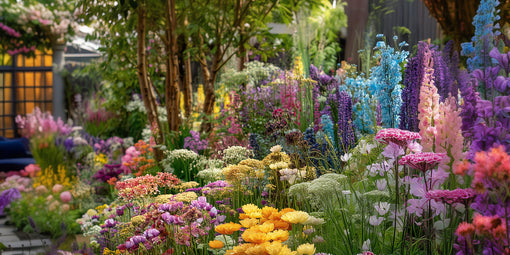
- Article published at:
Drawer menu

A Christmas wreath is the perfect way to lighten up and decorate the front of your house during the dark winter months. Especially this year, when we all need a little bit of extra glamour in our life - and perhaps have a little more time on our hands.
So, why not learn how to make one yourself? In this post, we at LOV Flowers, are going to take you through, step by step, on how to create your own dream wreath this Christmas.
There are two ways to do this. You can either buy a ready made Christmas wreath base, or make one from scratch.
The base can be pretty expensive when bought from a shop or online, and making one from scratch isn’t that difficult, so we suggest you go with the latter way.
You will need one wreath ring, scissors, green twine, florist wire and moss, in addition to hardy and different textured foliage such as ivory, spruce, evergreen oak and buxus.
For a natural look that gives off a lush Christmassy aroma, decorate your Christmas wreath with fir cones, dried oranges and cinnamon sticks. If you prefer a festive, more luxurious look, go with shiny baubles in different sizes, along with a gold or silver ribbon.
You can also choose a third option which is a minimalistic look. With this option, you only need a base ring of your choice, and some different foliage to attach with wire.
You can cover the whole ring or, if you have a pretty shaped ring such as a star, cover just strategic sections of the ring for a very modern look.

Start with securing generous handfuls of the moss to the top of the Christmas wreath ring, securing tightly with the green twine, to create a compact filling for a sturdy base to work on.
Cover the whole ring with equal amounts of moss and finish with a loop of the green twine on the reverse, ready to hang on your front door.
Take small bunches of the foliage, mixing them up as you go, and attach these to the moss base, using the green twine. Make sure that you overlap the foliage as you go, to avoid any gaps. Continue until all of your moss is covered.

Bundle two or three cinnamon sticks together with wire, and then wrap with a thin ribbon around the bundle to cover the wire. Attach these with equal spacing to the wreath using the floristry wire. Usually four or five cinnamon bundles is enough.
Continue decorating your Christmas wreath by securing floristry wire to each decoration, and placing the wire directly through the foliage and moss.
Pull the wire out the other side and, bend and push back through to hide the ends. Adding flowers to your wreath creates a feminine look!
Now, when your large beautiful luxury wreath is done, hang it on your front door with a secure ribbon. Make the neighbours soak up the warmth of your wreath.
If you feel that making a wreath from scratch is a little bit too much work then head over to our wreath collection and order yourself a luxury Christmas wreath.
Don't forget to follow us on Instagram and Facebook!